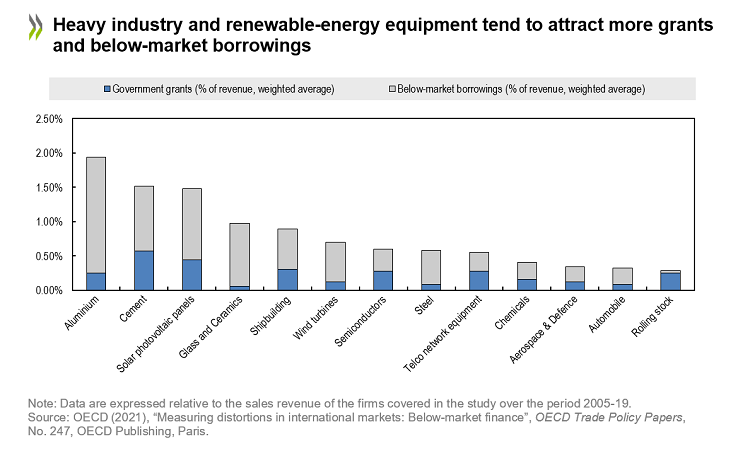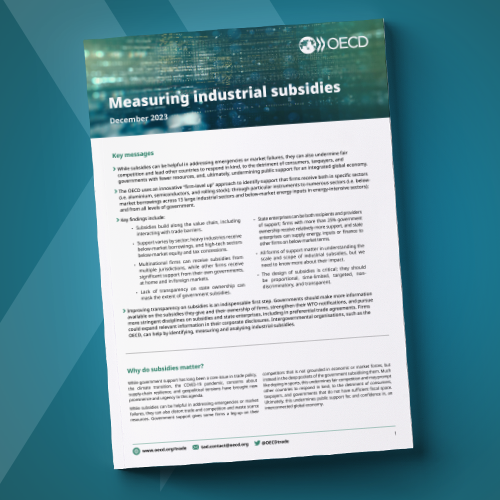Industrial subsidies and levelling the playing field
How is the OECD supporting a more level playing field?
While subsidies can be helpful policy tools for addressing emergencies or market failures - where other instruments are less effective or appropriate - they can also distort trade and competition depending on their design and target. Much like doping in sports, government support can give some firms a leg-up on their competitors that is not grounded in economic or market forces, but instead in the generosity of the government supporting them. This undermines fair competition and the willingness of economies to accept the results of that competition. Support may in turn push other countries to respond in kind, to the detriment of consumers, taxpayers, and other governments that do not have sufficient fiscal space, ultimately undermining public support for, and confidence in, an interconnected global economy.
Building on longstanding work measuring government support in agriculture, fossil fuels, and fisheries, the OECD has developed tools and methods for identifying and measuring subsidies in key industrial sectors. This work has used a novel firm-level approach to look into the support that governments provide to major industrial groups. The granular evidence thus obtained from subsidy recipients casts an unprecedented light on the various ways in which governments support manufacturers, including government grants, corporate tax concessions, debt and equity financing provided on below-market terms, and subsidised energy inputs. It highlights the important role that state enterprises can play as relatively large recipients of support but also as providers of support themselves, e.g. where state banks offer loans to companies at below-market rates.
The choice to rely on data collected at the level of individual firms is, importantly, one of necessity, reflecting the lack of government transparency that persists around public support. A key finding of OECD work on industrial subsidies is indeed that government information on these subsidies is generally poor. This hinders understanding of the scale, types, and effects of subsidies as well as efforts to revisit trade rules so they can better address government support.
Work at the OECD is ongoing to identify and quantify the use of industrial subsidies by governments. The OECD has already completed three sectoral studies looking at government support in key industrial sectors (aluminium, semiconductors, and rolling stock) and two studies focussing on specific support instruments (below-market finance and subsidised energy inputs). Work is also underway to capitalise on the firm-level data collected for these earlier studies in order to more systematically track government support across countries, sectors, years, and support instruments.

Latest update
Measuring Industrial Subsidies
What are subsidies and why do they matter? While subsidies can be helpful in addressing emergencies or market failures, they can also undermine fair competition and lead other countries to respond in kind, to the detriment of consumers, taxpayers, and governments with fewer resources, and, ultimately, undermining public support for an integrated global economy. By using an innovative “firm-level up” approach, the OECD shows how firms receive industrial subsidies from all levels of government across key sectors.
Policy brief
Level playing field publications
Access all OECD publications on level playing field on the OECD iLibrary.
Access all trade publications
All of our trade research and analysis is available to read online for free on the OECD iLibrary
Sign-up for our trade newsletter
Sign-up to our newsletter to receive periodic e-mail updates on new publications, videos and analysis.
Contact us with your questions
If you have questions about OECD research and analysis on trade, please feel free to contact us directly.
